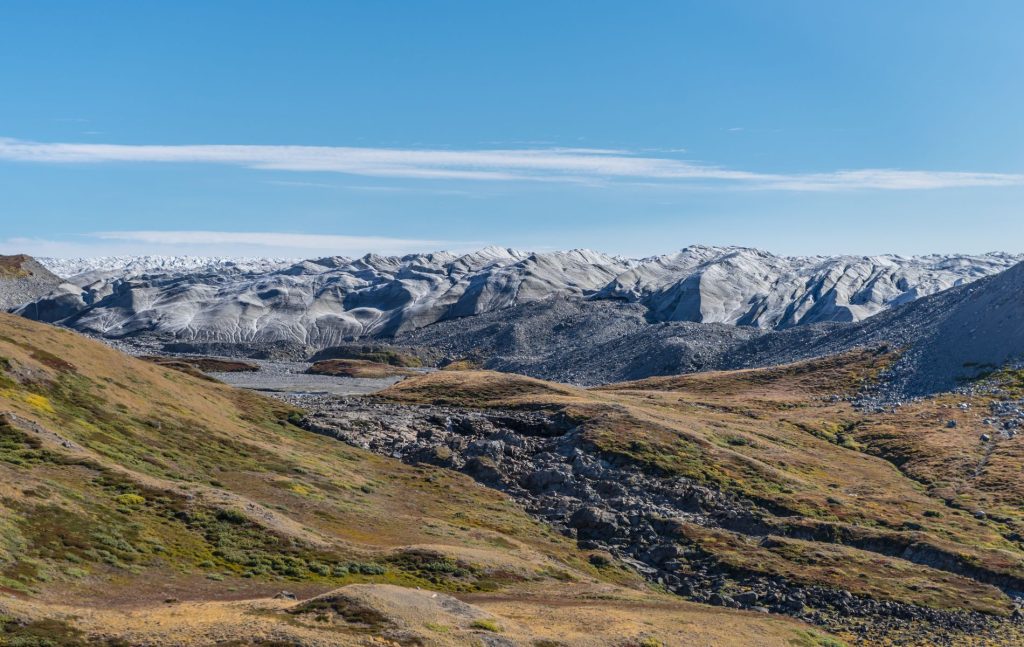Maybe Greenland will live up to its name after all. Scientists now agree that the ice in Greenland is melting, exposing a lot of soil. Herbaceous plants and shrubs are increasingly growing here.
The name of the country “Greenland” seems very contradictory when you see the island itself: Greenland is not green at all. However, this is slowly but surely changing. For example, Greenland's glaciers and ice sheet have lost an estimated 28,707 square kilometers of land in the past three decades. This is an area the size of Albania! Where the ice and snow disappear, the bottom appears. They are colonized very quickly by plants, according to a new study published in the journal Scientific reports.
Satellite images
Scientists were able to make this discovery by studying satellite images. They chose a long period for the research: from 1980 to 2020. Jonathan Karivik contributed to the research. “The satellite images were high-resolution and very sharp,” he explains. This made it possible to closely monitor the changes occurring on the surface. Many of these changes are driven by the fact that we are seeing warmer temperatures overall.
More green
Greenland's temperature is rising dramatically. This causes the ice to melt and expose the bottom. Wherever the soil is exposed, there is – literally – room for plants. And the vegetation does not allow it to be told twice, as satellite images show. For example, the area of Greenland covered by vegetation has increased by more than 87,000 square kilometers in the past three decades. Thus, the size of the vegetation of Greenland has doubled in three decades!
More green in the near future
So Greenland is getting greener. Researchers expect this greening to continue for the time being. “We've noticed signs that the melting ice is causing a lot of other interactions, which will only cause more ice to melt, so Greenland will become increasingly greener (see also box below, ed.),” explains Karivik.
Ice melting
Greenland is warming, causing ice to melt and expose soil. It's a big change, and in itself it also has an impact on the local climate. Because the light color of snow and ice is excellent at reflecting sunlight (and therefore heat). But due to the melting of ice in Greenland, a lot of (dark) rocks that had been hiding under the snow all this time were exposed. However, these darker rocks are less able to reflect heat and absorb more heat. This causes the surface temperature to rise, making Greenland as a whole warmer as well. This in turn leads to more thawing, making more soil visible and available to plants. This creates not only more and more space for greening, but also for more (accelerating) warming.
“The melting ice often exposes bare rocky areas, which quickly turn into tundra and later become overgrown with shrubs. At the same time, we see that the melting ice moves a lot of sediment and silt, creating many swamps and peat areas,” says Karevik. Scientists are not too enthusiastic about the origins of these swampy areas. The analysis shows that they emit a lot of methane – a greenhouse gas that can retain heat well, thus giving additional impetus to global warming. The researchers concluded in their study that “the expansion of vegetation – especially in Wetlands – indicates and exacerbates the thawing of permafrost (…) and thus releases greenhouse gases previously stored in these Arctic soils.”
Native tribes
So the greening of Greenland is actually not good news at all. Not for the local environment and climate. But definitely not for people living in Greenland. In this context, researcher Michael Grimes is particularly interested in the indigenous tribes on the island. “The changes we are seeing are crucial, especially for indigenous tribes in Greenland. These tribes depend on well-functioning ecosystems for hunting.
But even at greater distances, changes can be felt in Greenland's landscape, which not only bear witness to global warming but could also, eventually, exacerbate it. “The loss of ice in Greenland contributes significantly to sea level rise,” Grimes said.

“Lifelong entrepreneur. Total writer. Internet ninja. Analyst. Friendly music enthusiast.”








More Stories
iPhone SE 4: Bigger screen and Face ID according to new rumors
Belgian co-production with acclaimed actor Crispin Glover selected for Toronto Film Festival
Helldivers 2 Escalation of Freedom update will be released on August 6